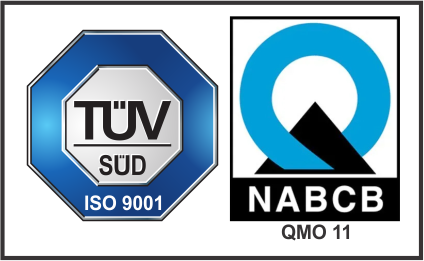Skyway Components
"Skyway Components" is a technologically advanced steel processing unit with an installed capacity of 24,000 mt per annum. The facilities include annealing, drawing after shot blasting, peeling, grinding and polishing, Heat Treated & Threaded Bars. The installed capacity of shot Blast material is 14,400 mt per annum. Skyway Components provides Drawing facility after Shot Blasting. It has 2 number of draw benches. One is the medium ranged draw bench drawing materials from 16mm-56mm diameter. The other is the heavy duty draw bench, drawing material from 40mm-85mm diameter.
Skyway Components perform heat treating for the production of heat-treated bars. Heat treating is typically used to attain the necessary mechanical properties especially to aid the machinability property. To have more precise control of mechanical properties, these bars undergo stress relieving process. Components like alloys are also improved through heat treating, typically on their hardenability. Attaining the ideal hardenability in alloys cannot be done through alloying elements only. Instead, a full cross-section is often used to increase the depth of hardness in each alloy. Skyway Components also manufacture all-Threaded Rods in wide range of diameters, meeting the requirements of the ASTM & DIN standards. The bars can be continuously threaded or threads may be put on ends. All bar types and diameters have matching fasteners including hex nuts and couplings designed to develop the full tensile strength of the bar.
Skyway Components has a state of the art laboratory and testing facilities and serves as the R & D Centre for the entire group. The testing of steel’s properties often begins with checking hardness. Hardness testing goes hand-in-hand with tensile testing, as it is a good indicator of mechanical properties within materials. It indicated a material’s ability to resist indentation and, as such, gives an indication of strength, wear resistance and toughness.
The process involves the application of a constant load on a rounded or pointed indenter to create and indentation in the material surface. The depth of penetration is then measured to provide an indication of hardness. Although it can be done as a stand-alone test, it is usually carried out in conjunction with other mechanical tests as an overall assessment of material properties.
Hardness affects a wide range of physical characteristics, such as how much the metal will wear, scratch, or withstand stress. Strength (or the point where the material breaks). Its Testing Facilities lncludes Spectro Testing, Ultrasonic Testing, Mpi Testing, Spark Testing, Xrf Testing, Nickel Spot Test, Hardness Testing, Hardenability Testing, Tensile Testing, Impact Testing, Bend Testing Fatigue Testing, Creep Testing, Macro Testing, Step Down Testing, Micro Testing, Sulphur Print Testing and many more.
| Contact Person | Mobile Number |
| Mr. Maink Jain | + 91-99887-78888 |



